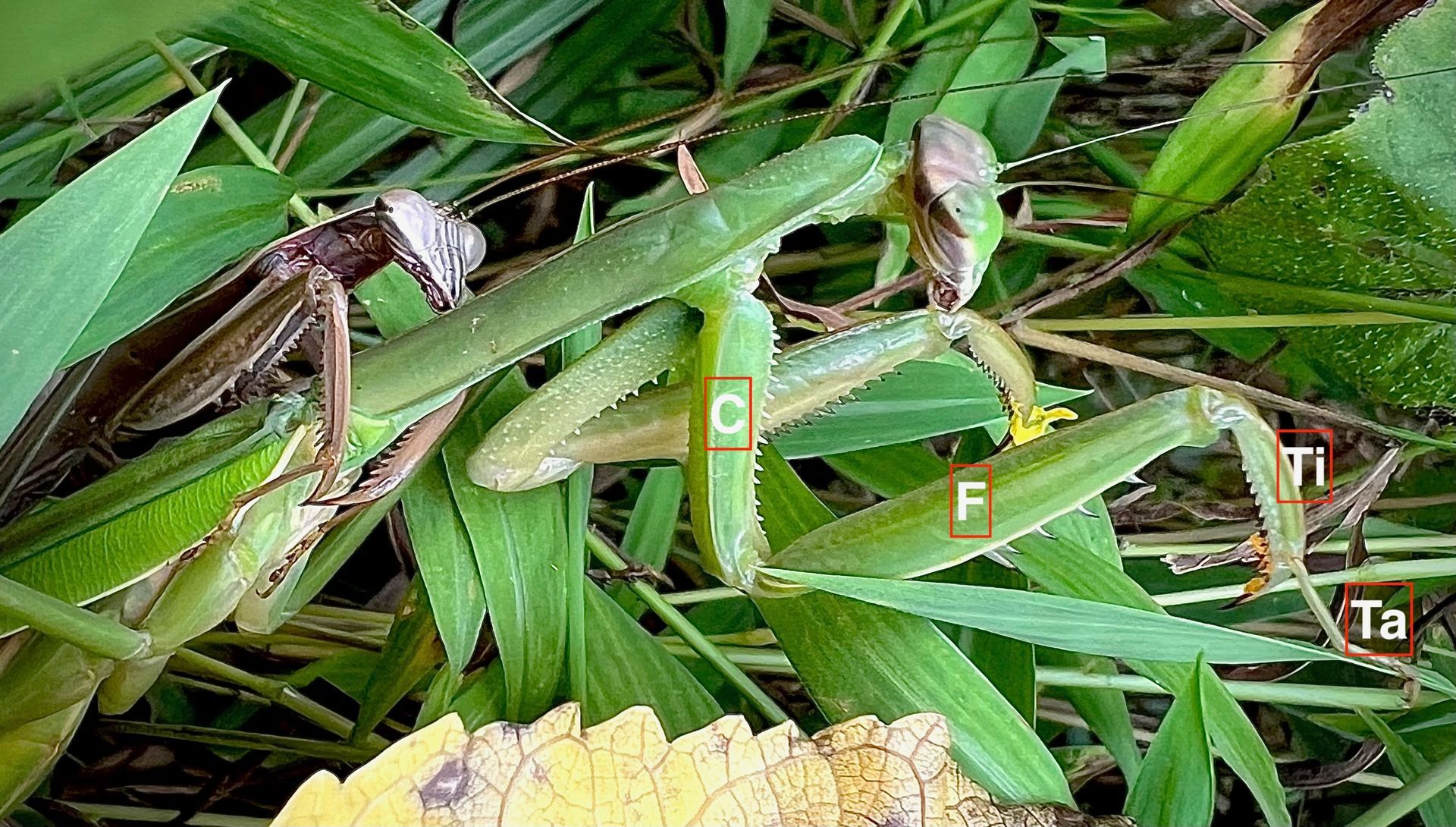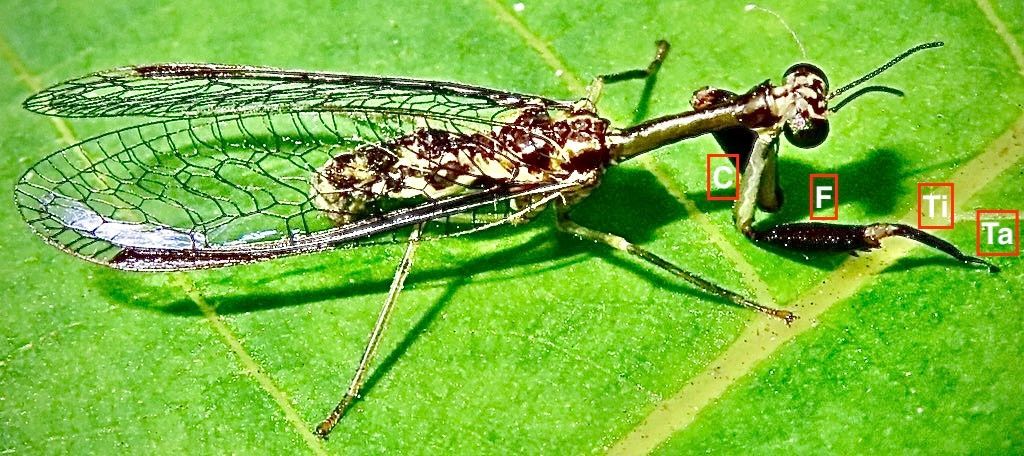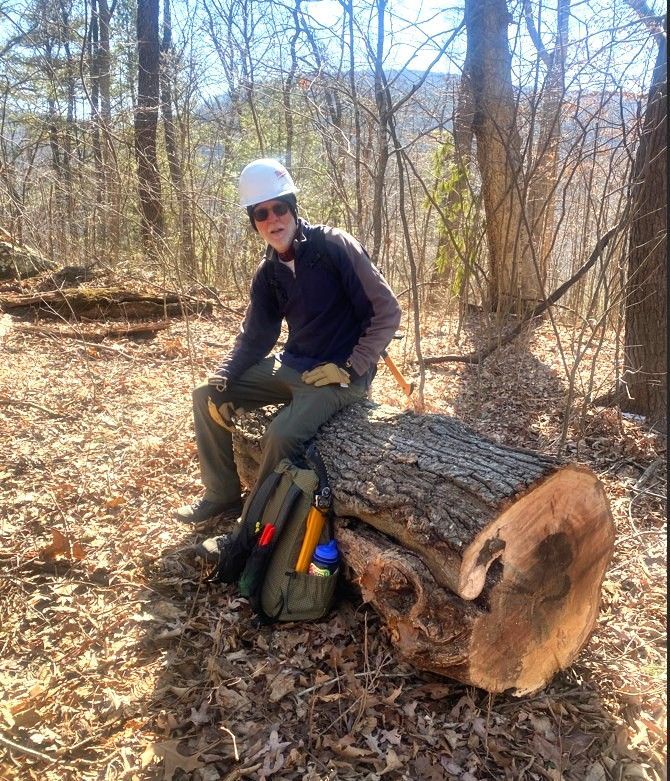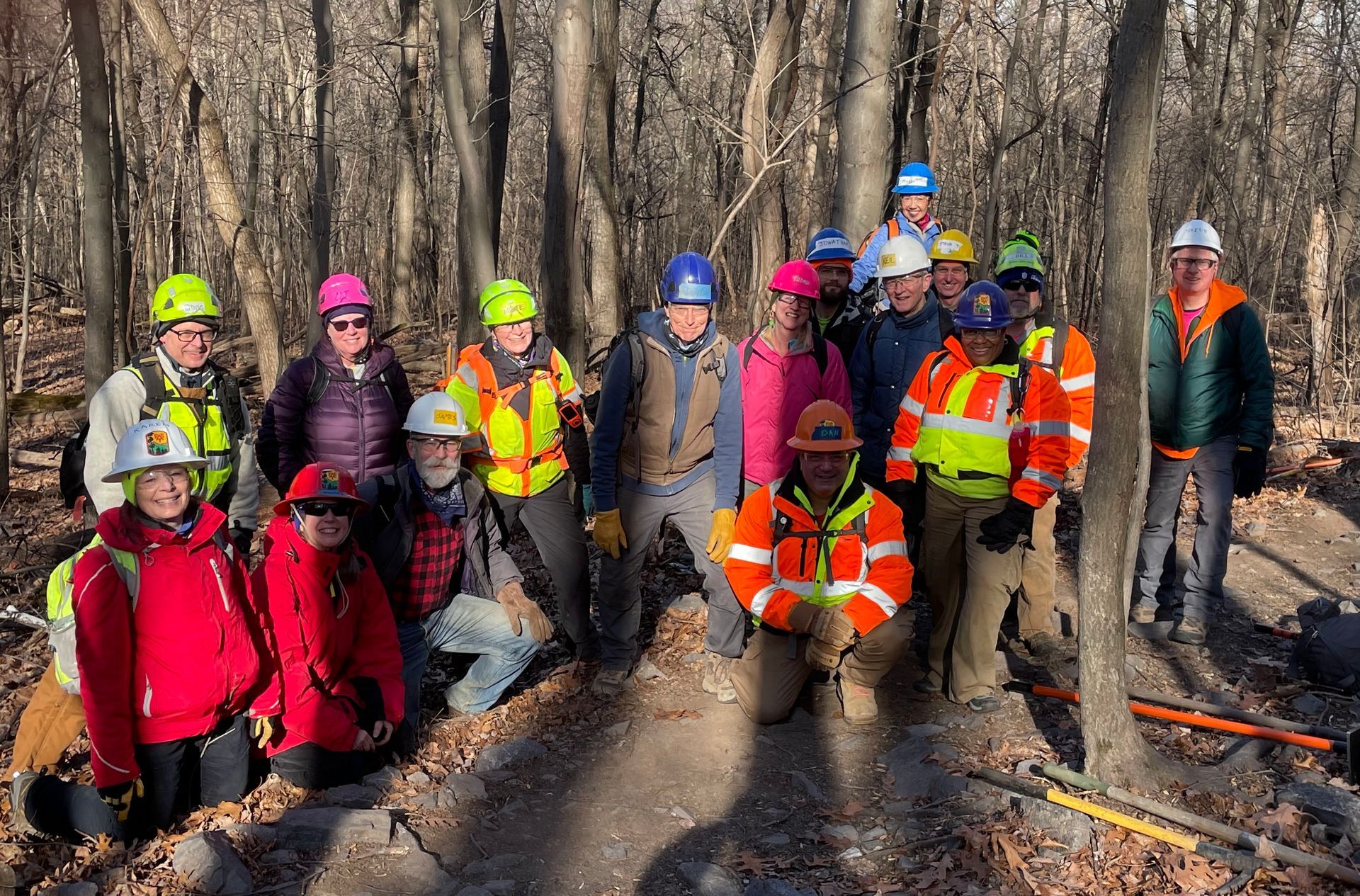"What on Earth?"
Article by Ray Barbehenn. Photos by Ray Barbehenn and David Cox.


The top predators in the insect world often go unnoticed. Those that are ambush predators are commonly camouflaged and sit still, waiting for an insect to come within their striking range. Many of these species have "raptorial" (grasping) front legs. These legs have become modified in very similar ways in unrelated species. The three largest front leg segments of the two species in the upper photos are held in a similar position: down from the body, then forward, and down again. These segments are named the coxa (C), the femur (F), and the tibia (Ti). The femur has been enlarged the most in both species. The tarsus (Ta) is a group of dainty leg segments that end with a tiny claw for gripping surfaces.
A couple of Chinese Praying Mantises (between 3-5 inches long) in the upper photo were found by Ray in a goldenrod field in Duke Hollow (northern Virginia near the AT) on September 10, 2023. The smaller brown male was clasped onto the green female, guarding her from other males. Notice not only the huge size of some of their front leg segments but also the rows of spines on their edges. The lower photo shows a rare Say's Mantidfly (about one inch long including the wings). It was found by David Cox on July 4, 2023 in SNP. It may look like a praying mantis but they are completely unrelated. The Mantidfly belongs to a group of insects that all have clear, net-like wings. However, like a praying mantis, it has two back pairs of skinny walking legs and a front pair of raptorial legs.
Why are the femurs of raptorial legs especially large?
A. Big femurs support big spines.
B. Big femurs contain big muscles to hold prey tightly.
C. Big femurs strengthen their legs for territorial fighting.
D. B and C.
The answer is at the bottom of the page!
Fun Facts and Musings
All insects have six legs, each of which is composed of segments that are connected at joints. The six legs usually look similar to each other and are usually all used for walking. However, the front legs of insects that are ambush predators are often highly modified for hunting. These raptorial legs can have greatly elongated segments to give them a greater reach, and they may also have enlarged segments that provide room for big muscles. But, why are the particular muscles of the femur so large?
Some brief background is helpful to think about the construction of insect legs. Like the muscles that we use for movement, an insect's muscles are arranged in opposing pairs; when one muscle in a pair contracts, it pulls back on the next segment out. When the second muscle of the pair contracts (and the first relaxes), it extends this leg segment forward. Similarly, when our bicep muscle contracts, it pulls our forearm back, and when our triceps muscle contracts, it straightens out our arm.
In a raptorial insect leg, when the large muscles in the femur (F) contract, they pull shut the sickle-shaped tibia (Ti). Snap! The increased power from having big femur muscles holds the prey tightly, preventing its escape. The large muscles in the coxa (C) also help a raptorial insect to punch forward quickly: A praying mantis can grab its prey in about a tenth of a second! A good video of a praying mantis in action can be seen at https://www.youtube.com/watch?v=Th15ia-Up_s. The strike has the same basic sequence across many raptorial species: (1) punching forward, (2) clamping down on the prey, and (3) pulling the captured prey back towards the predator's mouth.
The "business end" of the front legs of praying mantises and mantidflies is not actually at the end of their legs! Instead, the enlarged spine at the end of the tibia functions as a strong hook when they are striking an insect. (You can see a good view of the end of a praying mantis's front legs on the brown male in the upper photo.) The end-most leg segments (Ta) are still useful for walking, but they are flung aside when prey is captured.
Another major innovation in the raptorial legs of mantises and mantidflies is the length of the coxa – it is extremely stretched out! The coxa is normally a very short segment next to the body that gives the leg a wider range of motion for walking. Super-long coxas provide many raptorial insects with a greatly lengthened striking range.
Finally, to grip prey, the spines protrude from the edges of some of the leg segments of mantises and mantidflies. Spines are important because both the predator and prey have slippery, plastic-like body walls.
You are more familiar with the muscles in insect legs than you may realize. Do you enjoy eating crab legs? How about lobster claws? The large claw muscles in crustaceans have the same basic structure and function as the femur muscles in raptorial insect legs. The large piece of meat (muscle) in the claw pulls the claw shut. Another smaller muscle pulls the claw open while the larger (opposing) muscle relaxes. (I cannot tell you how praying mantis meat tastes, but would you be surprised if it tastes like chicken?)
The fact that raptorial legs arose independently so many times among unrelated insects provides one of the best examples of "convergent evolution." These specialized legs are found not only on praying mantises and mantidflies, but even on some predaceous beetles, flies, and "True Bugs"! This convergence most likely means that raptorial legs are the best way for these insects to ambush their prey. After all, better ambush predators get better nutrition. Better nutrition means better survival and reproduction. And, better survival and reproduction is the name of the game in the evolutionary history of every species on Earth! It is true that praying mantises can get into fights with each other over territory, but this is not what biologists believe drove the many modifications of their front legs.
Answer: B!
Send your photos and ideas for topics to Ray at rvb@umich.edu. Challenge: I want a photo of an antlion larva, and raccoons that aren't in garbage cans.









